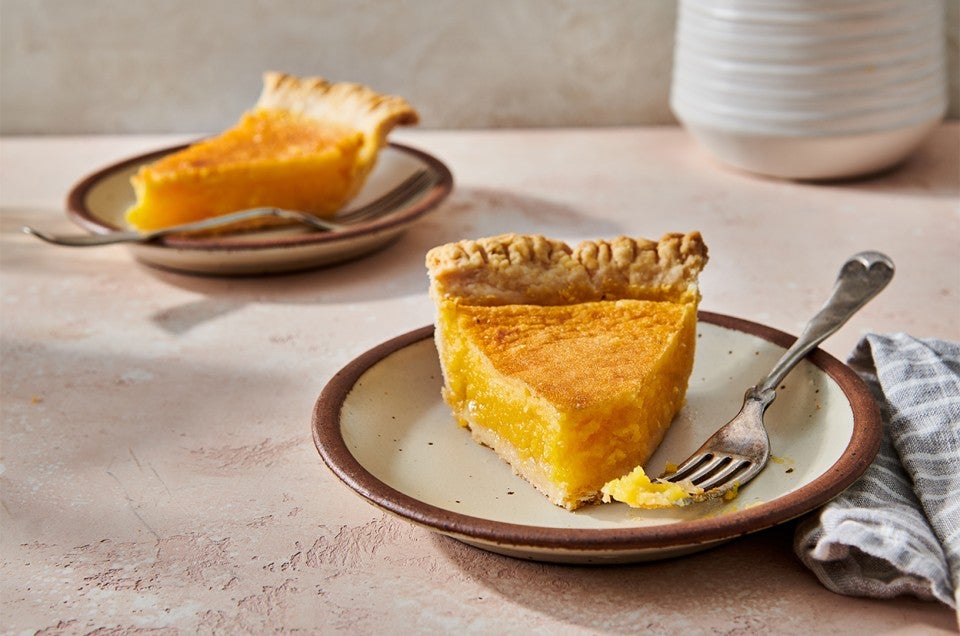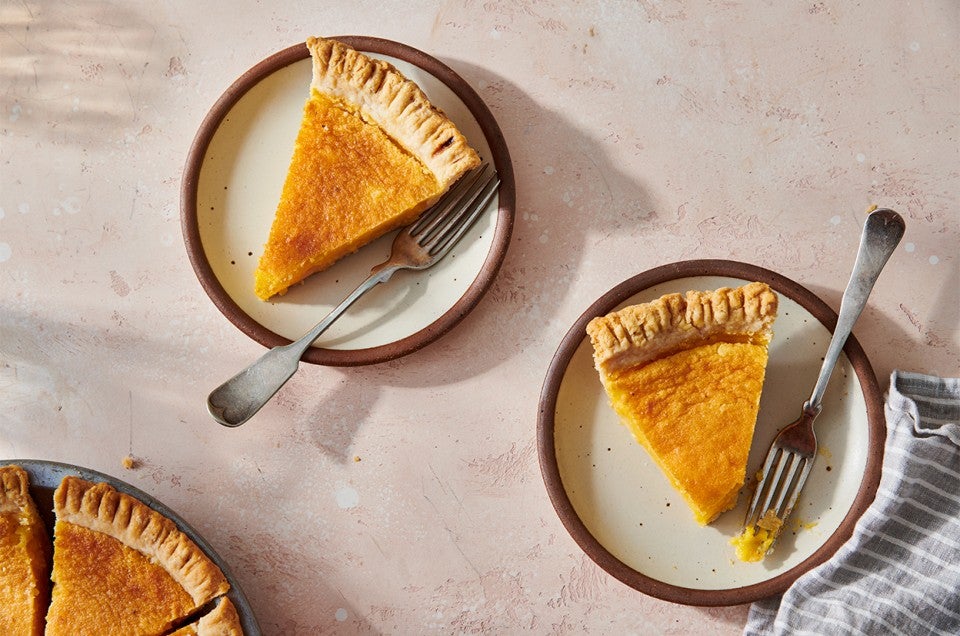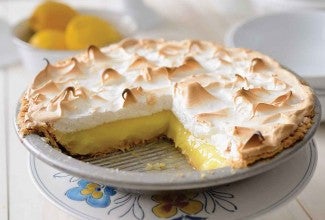Lemon Chess Pie
Chess pie? No one seems certain where the name for this type of pie comes from. A simple combination of eggs, sugar, and butter, with the tiniest bit of flour or cornmeal for thickening, chess pies appeared in print as early as the late 19th century. Whatever its provenance, this pie is perfect for those of you who love lemon, but don't like the somewhat "gluey" texture (or mile-high meringue) of a classic lemon meringue pie. This humble pie has no meringue to hide beneath; it's just lemon at its simple best.





















